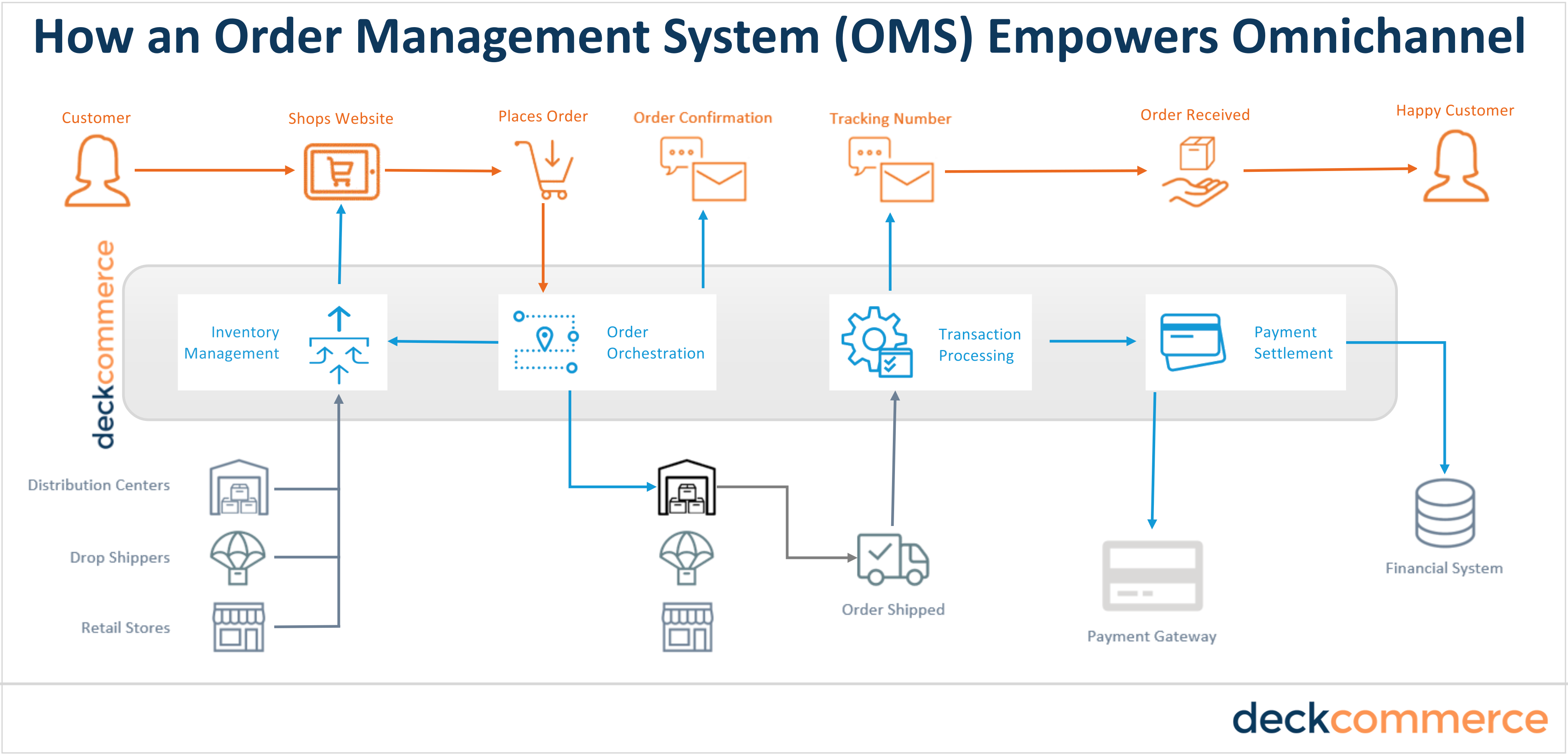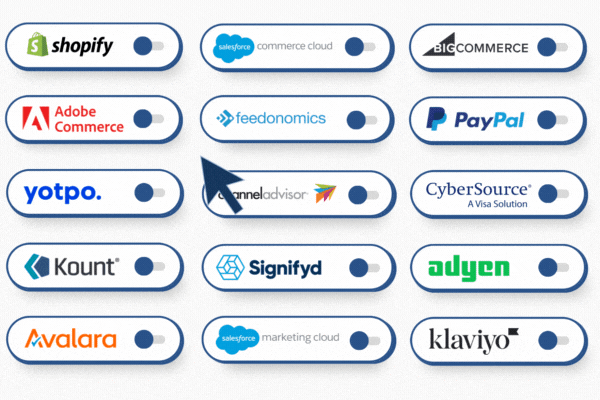Optimizing Omnichannel Inventory Visibility For Revenue Growth

In a retail era where the lines between physical and digital storefronts blur, the omnichannel approach has become a cornerstone of modern commerce. Effective inventory management is the technical support structure that enables brands to keep up with the retail revolution.
This article explores how and why optimizing omnichannel inventory can catalyze revenue growth powered by enhanced visibility.
What Does Omnichannel Mean and Why Does it Matter?
Omnichannel is a multi-channel approach providing customers with an integrated shopping experience. Whether the client is shopping online from a desktop or mobile device, by telephone, or in a physical store, the experience is seamless.
It intertwines multiple sales and distribution channels to ensure that customers can interact with a brand in a way that is not only convenient but also consistent across all platforms.
Why Does it Matter?
Omnichannel matters because it's customer-centric.
Successful implementations break down silos between shopping channels to put the customer's convenience and experience first.
In today's retail landscape, where customers expect flexibility, transparency, and a plethora of options, an omnichannel strategy is not just nice to have—it's essential.
What Does it Mean For Retail?
For retailers, omnichannel excellence hinges on advanced technology that unifies customer service, inventory tracking, fulfillment, and returns across all channels.
It's about leveraging a system that offers a single view of operations, ensuring consistency whether a customer shops online or in person.
This tech infrastructure is crucial for synchronizing order and inventory management, enabling real-time responsiveness to customer needs, and facilitating a streamlined fulfillment process.
In short, the right technology is the linchpin of a successful omnichannel strategy, turning diverse customer interactions into a seamless retail experience.
9 Challenges in Omnichannel Inventory Management
The retail shift to omnichannel has introduced complex inventory management challenges.
It's expected that retailers deliver a consistent and seamless experience across an expanding web of sales channels, each with unique operational demands.
This integration is far from simple, as it requires a sophisticated balance of technology, processes, and data analytics to ensure that inventory is accurately accounted for and available to customers whenever and wherever they shop.
#1. Data Silos and Integration Issues
One of the most significant hurdles is breaking down sales channel data silos.
Each channel often operates with its own inventory management system, leading to a lack of integration that can result in inconsistent inventory data. This dissonance can cause a cascade of issues, from inaccurate stock levels shown to customers to fulfillment inefficiency, leading to a poor customer experience.
#2. Real-Time Inventory Tracking
The velocity at which inventory moves in an omnichannel system demands real-time tracking. However, achieving this level of immediacy is challenging due to the lag in communication between systems and the physical movement of goods.
Without real-time data, retailers can neither promise nor deliver the level of service that customers expect.

#3. Demand Forecasting and Stock Allocation
Accurately forecasting demand and allocating stock is a critical challenge, made more complex by the proliferation of sales channels and customer touchpoints.
As retailers expand their reach through various platforms—ranging from online marketplaces and social media channels to brick-and-mortar stores—the task of predicting where and when products will be needed becomes a daunting exercise in data analysis and trend prediction.
The complexity escalates with each additional channel, requiring retailers to not only understand their customers' purchasing behaviors but also to anticipate them across a diverse set of shopping environments. This complexity necessitates a robust system that can handle intricate data and deliver actionable insights for inventory distribution.
#4. Channel-Specific Inventory Visibility
For omnichannel retail to function effectively, a comprehensive view of inventory across all sales channels and storage locations is essential. Retailers must track stock levels from the warehouse shelf to the store aisle, ensuring that every item is accounted for and can be located at a moment's notice.
However, achieving this panoramic inventory visibility is a significant hurdle for many. It demands an integrated system that can consolidate data from disparate sources and provide a unified, real-time picture of inventory status. Without this capability, retailers may face the risk of misinformed decisions and missed opportunities to meet customer demand.
#5. Fulfillment and Distribution Complexity
Fulfillment is another area where complexity arises. The ability to fulfill orders from the most appropriate location – whether it be a warehouse, a store, or a drop-shipper – requires sophisticated logic and systems that can handle complex decision-making processes.
#6. Returns Management
The reverse logistics of handling returns from various channels adds another layer of complexity. Efficiently processing returns quickly while maintaining accurate inventory levels is a challenge that can significantly impact customer satisfaction and the bottom line.
#7. Scalability and Flexibility
As businesses grow, their inventory management systems need to scale with them. Most existing systems are not flexible enough to handle increased volumes or the addition of new sales channels. This lack of scalability can hinder growth and lead to missed opportunities.
#8. Cross-Channel Order Orchestration
Managing orders across multiple channels is a balancing act. Retailers must ensure that orders are fulfilled in a way that optimizes inventory levels, minimizes shipping costs and times, and meets customer expectations. This orchestration requires sophisticated systems that can handle complex logistics.
#9. Customer Expectations and Experience
Inventory issues can lead to delayed orders, canceled orders, or incorrect orders – all of which damage the customer experience. Retailers need to manage inventory effectively to avoid these issues and maintain customer trust and loyalty.
The Impact of Omnichannel Inventory Visibility on Revenue Growth
Problem |
Inventory Visibility Solution |
Impact on Revenue |
|
Accurate Stock & Customer Satisfaction |
|
|
|
|
|
|
Efficient Fulfillment Operations |
|
|
|
|
|
|
Data-Driven Decision Making |
|
|
|
|
|
|
Enhanced Supplier Relations |
|
|
|
|
|
|
Agile Response to Market Changes |
|
|
|
Integrated Marketing and Sales Efforts |
|
|
|
|
|
|
Risk Mitigation |
|
|
|
|
Omnichannel Order Management: How an OMS Optimizes Inventory Visibility
An Order Management System (OMS) serves as the technological linchpin that enables retailers to overcome the complexities of inventory management across multiple channels. Implementing an Order Management System (OMS) that’s built for how and where you sell is pivotal in optimizing inventory management for omnichannel retail.
Centralized Inventory Control

An Order Management System (OMS) acts as a centralized hub, streamlining inventory data across all channels into a single, cohesive system. This centralization ensures consistent stock information and real-time synchronization of stock levels, enabling a seamless update process across all sales points as transactions occur or inventory is replenished.
Intelligent Order Routing
The right OMS can intelligently direct orders to the best fulfillment locations, including retail stores, considering factors like stock availability, customer location, and shipping logistics. This smart distribution of orders not only balances inventory across various locations but also minimizes the risks associated with overstocking or running out of stock, ensuring efficient use of inventory.
Complex Inventory Processes
An Order Management System (OMS) simplifies complex inventory scenarios, such as managing preorders to build anticipation for new products, handling backorders with automated customer notifications upon restocking, and coordinating kits and bundles that involve multiple SKUs, ensuring accurate tracking and fulfillment. This automation supports unique customer experiences while maintaining inventory precision.
Real-Time Inventory Visibility
Providing a transparent, real-time view of inventory across all sales channels and storage locations, an OMS enables precise stock tracking. This visibility is crucial for maintaining accurate inventory records and for the ability to track items at every stage in the supply chain.
Streamlined Returns Management
An OMS simplifies the returns process by automating the restocking of returned items and promptly updating inventory counts. It efficiently handles the complexities of reverse logistics, ensuring that returned products are processed and made available for resale with minimal delay.
Enhanced Customer Experience
By leveraging real-time data, an OMS can offer accurate delivery estimates to customers, enhancing their shopping experience. It also provides the flexibility for customers to engage in options like buying online and picking up in-store, adding a layer of convenience and service that modern consumers expect.
Scalability & Adaptability
Designed to grow with a business, an OMS can handle the addition of new products, channels, and markets, adapting its algorithms to learn from ongoing trends and customer behaviors. This adaptability ensures that inventory management remains robust and responsive over time.
System Integration

An OMS can seamlessly integrate with other critical business systems such as ERP and CRM, aligning inventory management with the broader business strategy. It also ensures that any third-party logistics services are incorporated smoothly, maintaining the integrity of the inventory management process.
Omnichannel Inventory Management Success Stories
These snapshots of success illustrate the power of strategic omnichannel inventory management.
By leveraging Deck Commerce's OMS, these companies not only met their operational challenges but also set new standards for customer satisfaction and business scalability.
Global Footwear Retailer Streamlines Fulfillment
Discover how a renowned global footwear brand transformed its order management by automating 98% of its orders with Deck Commerce. This strategic move not only minimized errors but also significantly enhanced customer experiences, even amidst the e-commerce surge of 2020.
→ Learn more about their journey to operational excellence and stay one step ahead of the competition with an OMS for footwear brands.
Build-A-Bear’s Rapid Pivot to Omnichannel
In just four weeks, Build-A-Bear turned over 400 stores into fulfillment centers with the help of Deck Commerce and ShipEngine. This quick adaptation doubled their initial shipping goals and proved crucial in navigating the retail challenges posed by the pandemic.
→ See how they achieved this remarkable feat
Digital Transformation of a Consumer Goods Conglomerate
A global consumer goods conglomerate with over 100 brands successfully consolidated its technology stack and unified its omnichannel strategy using Deck Commerce. This digital overhaul resulted in the launch of 15 sites in two years and processed millions of orders, driving significant revenue growth.
→ Read more about their digital transformation success
The #1 Omnichannel Order Management System for Retailers
Master omnichannel retailing with Deck Commerce.
Our suite of OMS solutions empowers retailers to exceed customer expectations through enhanced inventory accuracy and smarter fulfillment strategies. See the difference precision can make in meeting demand and driving satisfaction.
Interested in learning more? Schedule a free omnichannel assessment or chat with DTC experts about your order management gaps.





